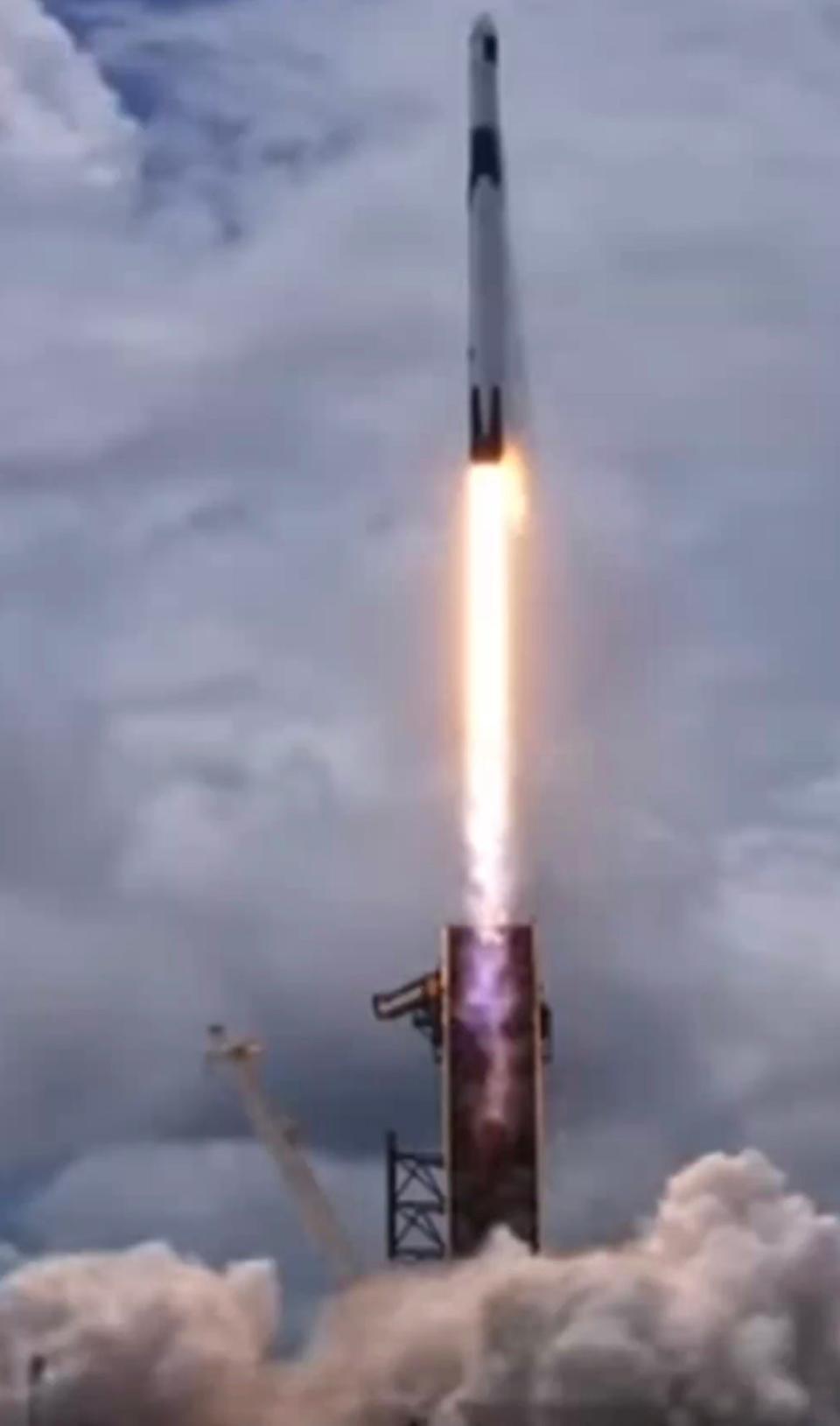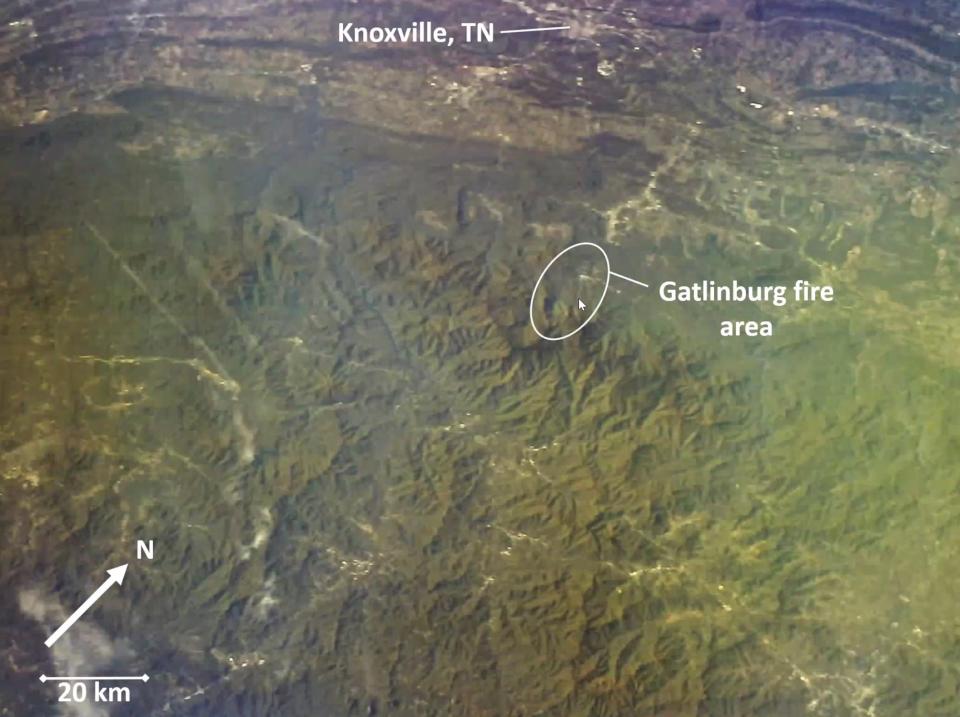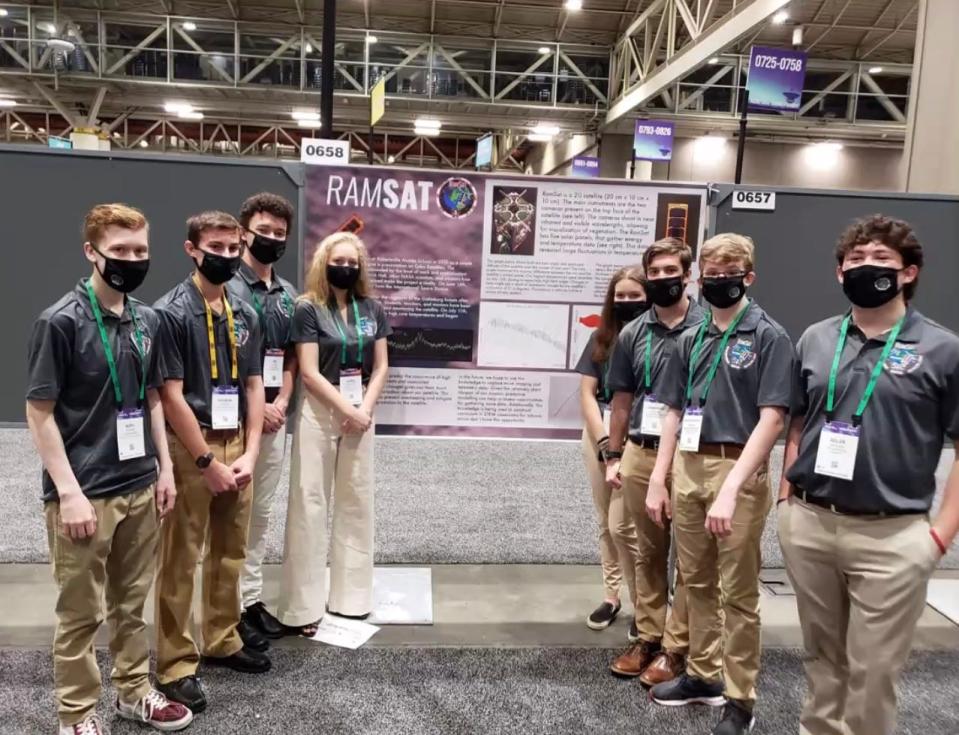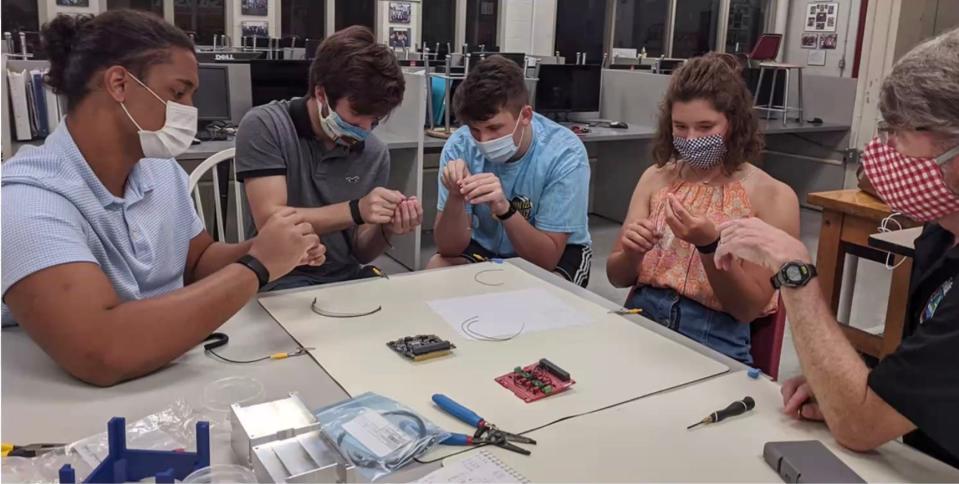RamSat mission’s goals achieved, says mentor
Like the miniature satellite built by middle-school students in Oak Ridge that flew in an orbit 280 miles above Earth starting June 14, 2021, and then 16 months later burned up in Earth’s atmosphere, the successful, seven-year research and educational mission at Robertsville Middle School (RMS) had its high points and low points.
The history of the mission was recently presented by Peter Thornton, director of the Climate Change Science Institute, at Oak Ridge National Laboratory. He helped recruit adult volunteers and he served as a lead mentor of 235 RMS students involved in developing hardware and software for the miniature satellite they built and tested. He gave the talk online and at High Places Community Church (because Roane State Community College was closed on Juneteenth, June 19) at a meeting hosted by ORION, the amateur astronomy and science club.

Guided by Thornton and other adult mentors, who had never built a satellite before, the students constructed RamSat, a CubeSat named after the school’s mascot. It measured about 4x4x8” and weighed less than 3 pounds.
On June 3, 2021, NASA launched RamSat using a SpaceX Falcon 9 rocket as part of a resupply mission to the International Space Station, from which the little satellite was deployed into orbit 11 days later by a Japanese robot arm.

The research mission of RamSat, which was proposed by two RMS students and approved by NASA, was to use the satellite’s cameras to capture images of a Great Smoky Mountains forest devastated by a 2016 wildfire in a search for signs of regrowth. RamSat was the only CubeSat built by a middle school that NASA agreed to support and launch (a service valued at $300,000). Most CubeSats are built by universities and high schools.
A high point in the RamSat story, the achievement of the research goal, happened only a few days before a low point in RamSat’s journey. Atmospheric drag forced the CubeSat to slow down from its orbital speed of 17,000 miles per hour, leave its original orbit around Earth every 90 minutes, fall toward Earth and burn up in its atmosphere on Oct. 11, 2022, over the Southern Indian Ocean.
On Oct. 5, as RamSat descended closer to Earth and as the Great Smoky Mountains experienced a cloudless day, the miniature satellite’s two cameras enabled the RMS students and their adult leaders to “see burn scars in the Chimneys area” and signs of regrowth of vegetation in other burned areas, Thornton said. “Our definition of success was met.”

He explained that “when we traced back six years through Google Earth imagery, we could see how over time one burn scar did fill in significantly. We were incredibly lucky to get images of the fire scar area on a nice, clear day over the target area just six days before the satellite completely burned up. It had already lost a tremendous amount of altitude, so our resolution was a lot better than it would have been in its orbit.”
Thornton explained that one camera received light in the visible spectrum and the other received light in both the near-infrared and visible spectrum. Both cameras were needed to detect areas of regrowth because vegetation is highly reflective in the near-infrared wavelengths and absorptive in the visible wavelengths.
Another high point was the launch of RamSat on June 3, 2021, from NASA’s Kennedy Space Center in Cape Canaveral, Florida. About 20 of the RMS students, their families and the adult leaders involved in the RamSat mission were present at the launch. Several RMS students were interviewed on NASA TV.
A low point came when the ham radio station in an RMS classroom received no signal from RamSat on June 14, 2021, after it was deployed into its orbit. Was the miniature satellite failing to work?
A high point soon followed when a ham radio operator from Virginia notified David Andrews, the local ham radio operator involved in the RamSat mission, that he had received RamSat’s first signal. The problem was resolved by correcting the alignment of the antenna on the RMS roof. It had been misaligned during work on the roof.
The digital data in the images the RamSat cameras took are relayed from the satellite antenna as radio signals that carry “packets” to a few of the 400 open-source global network ground stations, as well as to the ground stations at RMS and Andrews’ home. The RamSat team worked hard to tediously stitch the packets together to make a jpeg image that they improved by removing lens glare and increasing the contrast. In RamSat’s early images of the Atlanta region, team members could identify locations of warehouses.
Thornton credited Ian Goethert “with programming for the ground station that turned raw data into useful data by deconstructing and reconstructing the images and with developing the command-and-control interface with the ground station radios for sending commands to the RamSat to re-orient its cameras and for receiving data from it.”
Thornton gave a chronology of the mission’s important events. It began with an engineering enrichment class in 2015 taught by Todd Livesay, a science and technology teacher at RMS who was encouraged by a former Oak Ridge High School classmate to consider involving students in a NASA project. His classmate was Patrick Hull, an aeronautical engineer at NASA’s Marshall Space Flight Center in Huntsville, Alabama.
Students in seventh and eighth grade traveled with Livesay to the Huntsville facility to meet with Hull and others. They came up with a science mission for a miniature satellite in 2016.
The next year they submitted a proposal to NASA’s CubeSat Launch Initiative. The Gatlinburg fire scar imaging proposal, which was approved, ranked second out of 26 proposals. The RamSat mission was selected by NASA in 2018.
Under the guidance of Thornton, Livesay and other adult mentors, as well as sponsors and NASA experts, the spacecraft design was completed, and the purchasing of components began in 2019.
The project, which ended up costing $70,000, had numerous sponsors, Thornton said. They included ORNL, Consolidated Nuclear Security LLC/Oak Ridge Y-12 National Security Complex, Comcast, Oak Ridge Associated Universities, Oak Ridge Public Schools Education Foundation, Oak Ridge School District, Protomet (machine shop) and Pumpkin Space Systems, which provides nanosatellite components for CubeSats.
Despite the global pandemic and school lockdown in the spring of 2020, the RMS student-mentor team designed software and completed the first full build of hardware that year. The low point was the discovery during testing that a chip had shorted and burned up. So, the team rallied and pulled off a second full build of hardware in 2021. In June, RamSat was launched and deployed into orbit.
Thornton said that two groups of RMS students gave a RamSat poster session at the annual American Geophysical Union (AGU) meetings in December 2021 and December 2022 in New Orleans and Chicago, respectively. The students submitted an abstract and were invited to join other students in presenting poster sessions at the AGU conference, which is attended by 15,000 to 25,000 scientists.
“Several of the students on the RamSat team who have recently graduated from high school and gone onto college are majoring in aerospace engineering or some other kind of engineering,” said Thornton. “They have told us that the RamSat experience was formative for them in their selection of a career pathway.”
Thornton described the complexity of RamSat, calling it a “system of systems” that worked surprisingly well. He said it starts with the flight computer and its software that are connected to a power system, including its battery and solar panels; an attitude system, including its magnetorquers, magnetometers and sun sensors/electronics; a radio system, including its receiver, antennas and transmitter; an imaging system, including two cameras; a data system and a structural system.
Andrews said that if a CubeSat is ever built again in Oak Ridge – the possibility of a high school project has been discussed – he would recommend the installation of higher-resolution cameras and a higher bandwidth downlink to enhance the ability to capture and download quality images.
He praised the leadership of Thornton in recruiting skilled adult volunteers and motivating the team of RMS students and adult leaders “who are crazy enough to spend their every waking hour on this tremendous labor of love to get this done. You can’t even think about doing something like this without having someone like him as the leader.”
Thornton said that the highlight of and key to the success of the RamSat project was the “collaboration and communication” among mentors, teachers, students, the broader community of engineers and scientists, sponsors, vendors and NASA flight partners.
“It was a real joy,” he said, “for all of us to be able to have these contacts around the world.”



This article originally appeared on Oakridger: Oak Ridge students' mini-satellite achieved its mission, mentor says
